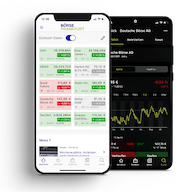Glossary
- DAX
- DAX future
- Day-Trading
- Dealer
- Delta (warrant)
- Derivatives
- Derivatives exchange
- Derivatives market
- Designated Sponsor
- Dilution of ownership
- Direct bank
- Direct listing
- Direct offering
- Directors' Dealings
- Discount broker
- Discount certificates
- Discount rate
- Distribution
- DivDAX
- Diversification
- Dividend
- Dividend guarantee
- Dividend stripping
- Dividend yield
- Double listing
- Downward movement
- Dual Listing (DL)
Discount rate
At the beginning of 1999, the European Economic and Monetary Union (EMU) came into effect. At that time, the European System of Central Banks (ESCB) and the European Central Bank (ECB) assumed authority for monetary policy in Euroland, and the Bundesbank's discount rate was replaced by the discount rate of the European Central Bank.
Up to the end of 1998, banks could take out a short-term loan from the Bundesbank or the State Central Banks at the discount rate by selling bills of exchange with a maximum maturity of three months.
Through the discount rate, the Bundesbank influenced the interest rate that the banks charged their own borrowers. As a rule, a lower discount rate increased demand for credit, whereas a high discount rate tended to reduce the overall demand for credit. The discount rate therefore influenced general liquidity, price stability, as well as the development of the inflation rate and interest rates.




